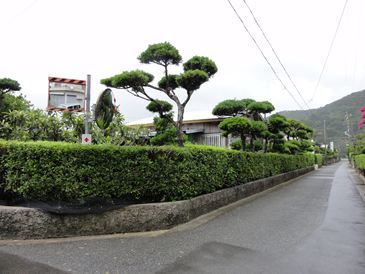 |
|
 |
Report on the 4th Field Workshop

The 4th Field Workshop
Dates: June 19 to 20, 2010
Venue: Amami City Museum
The 4th Workshop featured presentations by a group of people involved in environmental conservation and knowledge production in Amami region. The participants in the workshop exchanged ideas and approaches with each other about what local stakeholders expected from scientists, their frustration at what scientists were doing, and how scientists could contribute to local communities. We reviewed some community-based efforts for environmental and landscape conservation, examined the knowledge used by the relevant stakeholders, and explored how a scientific community as an outside actor could contribute to them.
|

| ●Opening address / the objectives of the workshop |
| |
Hideyuki Onishi (Faculty of Contemporary Social Studies, Doshisha Women's College of Liberal Arts)
Tetsu Sato (Faculty of Tourism and Environmental Studies, Nagano University)
Taku Iida (Research Center for Cultural Resources, National Museum of Ethnology)
|
| ● Workshop Session 1: |
|
- "Community development taking advantage of Amami's heritages - Challenges of the Amami Islands in the context of natural environment and culture"
Kiyomi Nakayama (Amami City Museum)
- "Environmental conservation efforts in Amami-Oshima Island"
Hiroaki Sono (Environmental Network Amami)
- "Amami Mammalogical Society's efforts - Amami-Oshima Isaland is not all the Amami Rabbit (Amami no Kurousagi)"
Naoshi Nagae (Amami Mammalogical Society)
General discussion |
 |
| June 20 (Sunday) |
| ● Workshop Session 2: |
|
- "Adoption and utilization of internationally-recognized systems by local communities"
Tetsu Sato
- "Utilization of Amami's heritages from Kenmun (local sprite) perspective"
Kiyomi Nakayama
- "Amami region's efforts for being designated a World Natural Heritage Site"
Jun Tanaka (Amami Ranger Office of Nature Conservation, the Ministry of the Environment)
General discussion |
 |
Field Workshop Session (Amami City Museum)
|
| |
| ● Field trip |
|
Field trip to a site with restored landscape in Akagina district of former Kasaricho |

Street with a flavor of old samurai residences |
|
| Participants: |
| Tetsu Sato (Faculty of Tourism and Environmental Studies, Nagano University), Mahito Kamada (Institute of Technology and Science, the University of Tokushima), Shigeru Yanaka (Faculty of Regional Sciences, Tottori University), Hideyuki Onishi (Faculty of Contemporary Social Studies, Doshisha Women's College of Liberal Arts), Atsushi Makino (Shiga Prefectural Lake Biwa Museum), Masahito Kamimura (WWF Coral Reef Conservation and Research Center), Katsunobu Shirakawa (Natural Museum of Geihoku), Mayuko Shimizu (Faculty of Tourism and Environmental Studies, Nagano University) |
|
|

|
 |